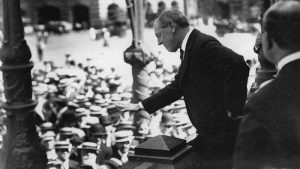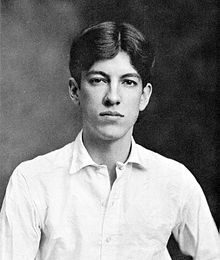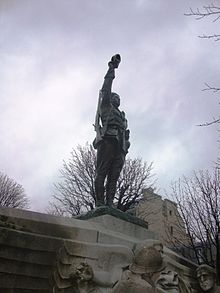And a very happy Free For All birthday wish to Hans Fallada!
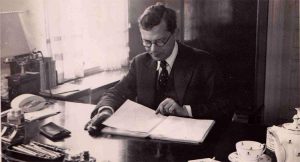
You might not have heard of Hans Fallada. That’s ok. His work fell into general obscurity over the second half of the twentieth century. However, the grand and glorious people at the Melville House Press (whose blog is very nearly almost as terrific as ours), have gone a long way to bringing him back into the literary fold, so to speak, and to put his work in front of the eyeballs of a new generation.
Fallada (whose given name was Rudolf Wilhelm Friedrich Ditzen) was born on this day in 1893 in Greifswald, Germany. Though he always seems to have had trouble fitting in with his peers, his real struggles began in 1909, when he was run-over by a horse cart, and kicked in the face by the horse, and 1910, when he contracted typhus. The pain and isolation of these events marked Fallada for life,–as the drug addiction he developed from the pain killers he was given. His battle with depression was a life-long one, as well, meaning he spent a good deal of time between the wars in asylums and prison as a result of his drug addictions, even as he grew in prominence as an author.
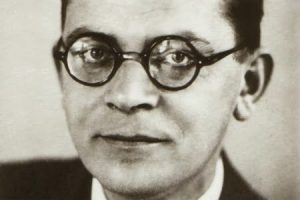 Fallada was very much a writer of the moment, and his books dealt with contemporary scenarios and politics. As a result, it wasn’t long before some of his most popular works were banned from German libraries, and Fallada himself was declared an “undesirable author”. Fearing for his well-being, Fallada’s British publisher, George Putnam, send his personal yacht to Berlin to pick up Fallada and his wife. Though their bags were packed, Fallada declared at the very last minute that he couldn’t leave (he had confided to a friend years before “I could never write in another language, nor live in any other place than Germany.”) He wrote children’s books and other non-political pieces in order to remain under the radar, until he was called upon by Goebbels to write a specifically anti-Semitic novel that would be backed by the Nazi party.
Fallada was very much a writer of the moment, and his books dealt with contemporary scenarios and politics. As a result, it wasn’t long before some of his most popular works were banned from German libraries, and Fallada himself was declared an “undesirable author”. Fearing for his well-being, Fallada’s British publisher, George Putnam, send his personal yacht to Berlin to pick up Fallada and his wife. Though their bags were packed, Fallada declared at the very last minute that he couldn’t leave (he had confided to a friend years before “I could never write in another language, nor live in any other place than Germany.”) He wrote children’s books and other non-political pieces in order to remain under the radar, until he was called upon by Goebbels to write a specifically anti-Semitic novel that would be backed by the Nazi party.
As the result of an altercation with his (now ex-) wife, Fallada was incarcerated in an insane asylum in 1944. In order to protect himself, Fallada told officials he had an assignment to fulfill for Goebbels’s office, which protected him from the inhuman treatment to which asylum patients were typically subjected. But rather than writing the anti-Jewish novel, Fallada used his ration of paper to write a novel called The Drinker (Der Trinker), a deeply critical autobiographical account of life under the Nazis, and a short diary In meinem fremden Land (A Stranger in My Own Country). He wrote in a dense, overlapping hand that obscured most of his words, allowing the manuscript, and Fallada himself, to be saved until he was released in December 1944 as the Nazi government began to crumble.
Fallada died in February 1947, aged 53, from a weakened heart due to years of addiction to morphine, alcohol and other drugs, leaving behind the recently completed novel Every Man Dies Alone, an anti-fascist novel based on the true story of a German couple, Otto and Elise Hampel, who were executed for producing and distributing anti-Nazi material in Berlin during the war. Though many German writers who had escaped Nazi German disparaged him (and his work) because he chose to remain, we thankfully now have the chance to meet Fallada anew, and to realize just how brave a survivor he was, and to encounter his words anew–when we may need them more than ever.
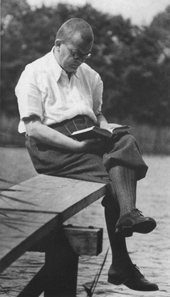
And speaking of books, let’s take a look at some of the other books that traipsed onto our shelves this week…

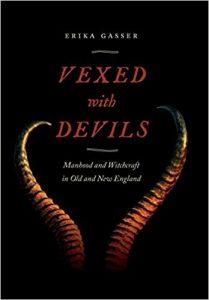 Vexed with Devils: In a week that saw the dedication of the Salem Witch Trials memorial, it seems fitting to showcase Erika Gasser’s new book, which focuses on the cultural history of witchcraft, witchcraft-possession phenomena and the role of men and patriarchal power. As she discusses in this fascinating work, witchcraft trials had as much to do with who had power in the community, to impose judgement or to subvert order, as they did with religious belief. Essentially, witchcraft was used as a form of social policing. She argues that the gendered dynamics and power-plays inherent in stories of possession and witchcraft show how men asserted their power in society and over each other (and the women around them). While all men were not capable of accessing power in the same ways, many of the people involved—those who acted as if they were possessed, men accused of being witches, and men who wrote possession propaganda—invoked manhood as they struggled to advocate for themselves during these perilous times. This is a wonderfully researched and insightful book, and, as Publisher’s Weekly noted, “Anyone seeking a fresh perspective on, and deeper understanding of, such possession accounts will not be disappointed.”
Vexed with Devils: In a week that saw the dedication of the Salem Witch Trials memorial, it seems fitting to showcase Erika Gasser’s new book, which focuses on the cultural history of witchcraft, witchcraft-possession phenomena and the role of men and patriarchal power. As she discusses in this fascinating work, witchcraft trials had as much to do with who had power in the community, to impose judgement or to subvert order, as they did with religious belief. Essentially, witchcraft was used as a form of social policing. She argues that the gendered dynamics and power-plays inherent in stories of possession and witchcraft show how men asserted their power in society and over each other (and the women around them). While all men were not capable of accessing power in the same ways, many of the people involved—those who acted as if they were possessed, men accused of being witches, and men who wrote possession propaganda—invoked manhood as they struggled to advocate for themselves during these perilous times. This is a wonderfully researched and insightful book, and, as Publisher’s Weekly noted, “Anyone seeking a fresh perspective on, and deeper understanding of, such possession accounts will not be disappointed.”
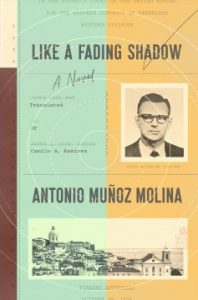 Like a Fading Shadow: Using recently declassified FBI files, Antonio Muñoz Molina has reconstructed a fiction look into James Earl Ray’s final steps through the Lisbon, where he hid for two months following the assassination of Dr. Martin Luther King, Jr. But Molina has also wrapped his own story up in this tale of self-identity and deception, alternating between Ray in 1968 at the center of an international manhunt; a thirty-year-old Muñoz Molina in 1987 struggling to find his literary voice; and the author in the present, reflecting on his life and the form of the novel as an instrument for imagining the world through another person’s eyes. The result is a deep, complex, and enlightening work that Kirkus Reviews noted, “delicately oscillates between an author’s quest for truth and a criminal’s search for safety . . . A tragically poetic study of the calamity that set back the civil rights movement.”
Like a Fading Shadow: Using recently declassified FBI files, Antonio Muñoz Molina has reconstructed a fiction look into James Earl Ray’s final steps through the Lisbon, where he hid for two months following the assassination of Dr. Martin Luther King, Jr. But Molina has also wrapped his own story up in this tale of self-identity and deception, alternating between Ray in 1968 at the center of an international manhunt; a thirty-year-old Muñoz Molina in 1987 struggling to find his literary voice; and the author in the present, reflecting on his life and the form of the novel as an instrument for imagining the world through another person’s eyes. The result is a deep, complex, and enlightening work that Kirkus Reviews noted, “delicately oscillates between an author’s quest for truth and a criminal’s search for safety . . . A tragically poetic study of the calamity that set back the civil rights movement.”
 At the Table of Wolves: Kay Kenyon is a science fiction writer beloved by reviewers and readers alike, and the opening of her new series–described as a mix of espionage and X-Men is sure to win her even more followers. In 1936, there are paranormal abilities that have slowly seeped into the world, brought to the surface by the suffering of the Great War. The British haven’t managed to outpace Germany in weaponizing these new powers, until the ultra-secret site called Monkton Hall is established. Kim Tavistock, whose power allowers her to draw out truths that people most wish to hide, is among the test subjects at the facility. When she wins the confidence of caseworker Owen Cherwell, she is recruited to a mission to expose the head of Monkton Hall—who is believed to be a German spy. As she infiltrates the upper-crust circles of some of England’s fascist sympathizers, she encounters dangerous opponents, including the charismatic Nazi officer Erich von Ritter, and discovers a plan to invade England. Though no one believes her story, Kim is determined to expose the plan and save England–even if she has to do it single-handedly. With deft characterization and quick pacing, Kenyon has created a book that earned a starred review from Publisher’s Weekly, who called it “A superb adventure, worthy to launch a distinguished historical fantasy series.”
At the Table of Wolves: Kay Kenyon is a science fiction writer beloved by reviewers and readers alike, and the opening of her new series–described as a mix of espionage and X-Men is sure to win her even more followers. In 1936, there are paranormal abilities that have slowly seeped into the world, brought to the surface by the suffering of the Great War. The British haven’t managed to outpace Germany in weaponizing these new powers, until the ultra-secret site called Monkton Hall is established. Kim Tavistock, whose power allowers her to draw out truths that people most wish to hide, is among the test subjects at the facility. When she wins the confidence of caseworker Owen Cherwell, she is recruited to a mission to expose the head of Monkton Hall—who is believed to be a German spy. As she infiltrates the upper-crust circles of some of England’s fascist sympathizers, she encounters dangerous opponents, including the charismatic Nazi officer Erich von Ritter, and discovers a plan to invade England. Though no one believes her story, Kim is determined to expose the plan and save England–even if she has to do it single-handedly. With deft characterization and quick pacing, Kenyon has created a book that earned a starred review from Publisher’s Weekly, who called it “A superb adventure, worthy to launch a distinguished historical fantasy series.”
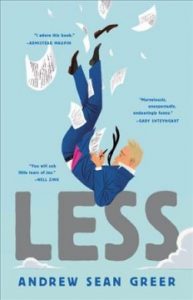 Less: Picture it: You are a failed novelist about to turn fifty. A wedding invitation arrives in the mail: your boyfriend of the past nine years is engaged to someone else. You can’t say yes–it would be too awkward–and you can’t say no–it would look like defeat. On your desk are a series of invitations to half-baked literary events around the world. What do you do? Well, if you’re Arthur Less, you accept every single one of those invitations, and embark on a marvelous, unexpectedly touching, madcap journey around the world, through surprise encounters and unanticipated birthdays and into love. This sharp satire on Americans abroad is also a lovely look into our shared humanity, and a book that encouraged The Washington Post to declare, “Greer is an exceptionally lovely writer, capable of mingling humor with sharp poignancy…. [His] narration, so elegantly laced with wit, cradles the story of a man who loses everything: his lover, his suitcase, his beard, his dignity.”
Less: Picture it: You are a failed novelist about to turn fifty. A wedding invitation arrives in the mail: your boyfriend of the past nine years is engaged to someone else. You can’t say yes–it would be too awkward–and you can’t say no–it would look like defeat. On your desk are a series of invitations to half-baked literary events around the world. What do you do? Well, if you’re Arthur Less, you accept every single one of those invitations, and embark on a marvelous, unexpectedly touching, madcap journey around the world, through surprise encounters and unanticipated birthdays and into love. This sharp satire on Americans abroad is also a lovely look into our shared humanity, and a book that encouraged The Washington Post to declare, “Greer is an exceptionally lovely writer, capable of mingling humor with sharp poignancy…. [His] narration, so elegantly laced with wit, cradles the story of a man who loses everything: his lover, his suitcase, his beard, his dignity.”
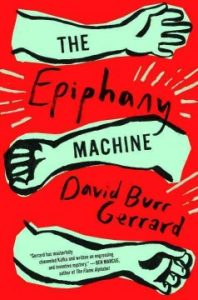 The Epiphany Machine: “Everyone else knows the truth about you, now you can know it, too”–that’s the slogan for an odd, junky contraption that tattoos personalized revelations on its users’ forearms. A number of city dwellers buy into the epiphany machine, including Venter Lowood’s parents, and even though they move away, Victor can’t ignore the stigma of those tattoos–or their accuracy. So when Venter’s grandmother finally asks him to confront the epiphany machine, he’s only too happy to oblige. But when he meets the machine’s surprisingly charming (if slightly off-putting) operator, Adam Lyons, Venter finds himself falling for the machine, as well…until Venter gets close enough to recognize the undeniable pattern between specific epiphanies and violent crimes. A pattern that’s gone unreported. A pattern that proves the machine may be right, after all. This big, imaginative, tragicomedy of a book earned another starred review from Publisher’s Weekly, who cheered that “This is a wildly charming, morally serious bildungsroman with the rare potential to change the way readers think.”
The Epiphany Machine: “Everyone else knows the truth about you, now you can know it, too”–that’s the slogan for an odd, junky contraption that tattoos personalized revelations on its users’ forearms. A number of city dwellers buy into the epiphany machine, including Venter Lowood’s parents, and even though they move away, Victor can’t ignore the stigma of those tattoos–or their accuracy. So when Venter’s grandmother finally asks him to confront the epiphany machine, he’s only too happy to oblige. But when he meets the machine’s surprisingly charming (if slightly off-putting) operator, Adam Lyons, Venter finds himself falling for the machine, as well…until Venter gets close enough to recognize the undeniable pattern between specific epiphanies and violent crimes. A pattern that’s gone unreported. A pattern that proves the machine may be right, after all. This big, imaginative, tragicomedy of a book earned another starred review from Publisher’s Weekly, who cheered that “This is a wildly charming, morally serious bildungsroman with the rare potential to change the way readers think.”
Until next week, beloved patrons–happy reading!

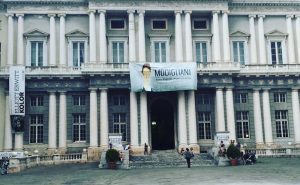
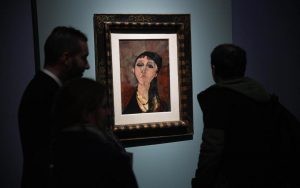
 It seems like the stuff of fiction–and yet the repercussions of art crime are international and unforgettable. If you’ve ever been to the Isabella Stuart Gardener Museum, and looked at the empty frames that still hang on the wall in memory of the (still missing) paintings that were cut out of them, you know what a palpable loss those pieces still have (see image to left, via the New York Post). For those who have lost, or found, pieces stolen by Nazi authorities or during the Stalinist purgers, the enormity of the crime committed cannot be contained in a frame. Art speaks to us in a way that words and deeds cannot, and to rob someone of that is to rob them of their humanity. It also robs humanity of some truly staggering works of genius as well–the number of pieces that now have dubious provenance (the official history of a painting that traces its whereabouts throughout its life) is enormous, and is ever-growing.
It seems like the stuff of fiction–and yet the repercussions of art crime are international and unforgettable. If you’ve ever been to the Isabella Stuart Gardener Museum, and looked at the empty frames that still hang on the wall in memory of the (still missing) paintings that were cut out of them, you know what a palpable loss those pieces still have (see image to left, via the New York Post). For those who have lost, or found, pieces stolen by Nazi authorities or during the Stalinist purgers, the enormity of the crime committed cannot be contained in a frame. Art speaks to us in a way that words and deeds cannot, and to rob someone of that is to rob them of their humanity. It also robs humanity of some truly staggering works of genius as well–the number of pieces that now have dubious provenance (the official history of a painting that traces its whereabouts throughout its life) is enormous, and is ever-growing.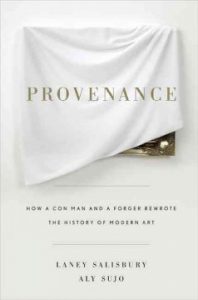 Provenance
Provenance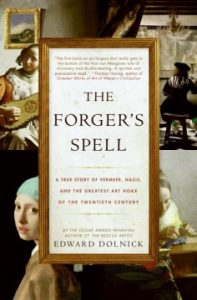
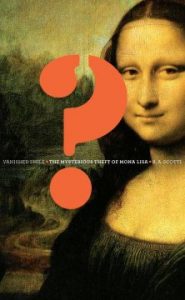
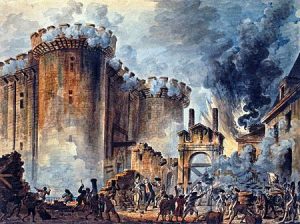
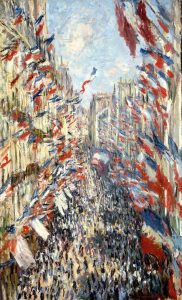
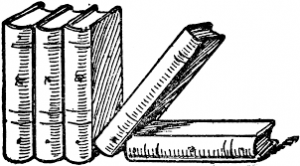
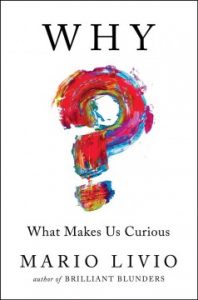
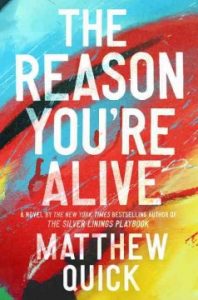

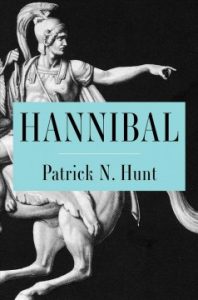
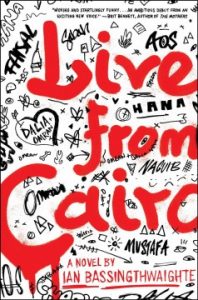

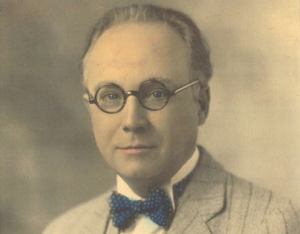

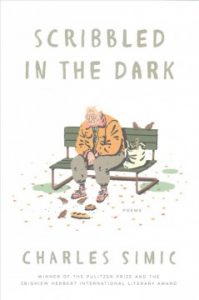


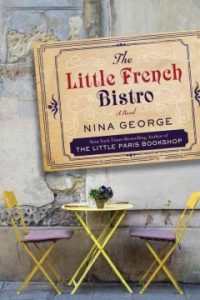

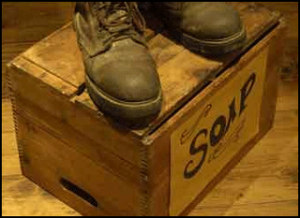

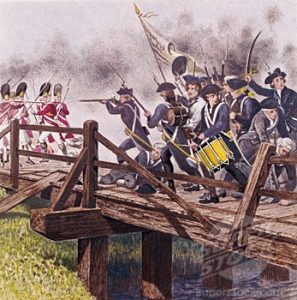
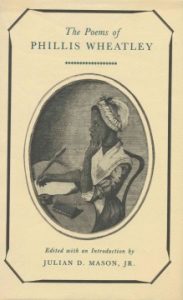
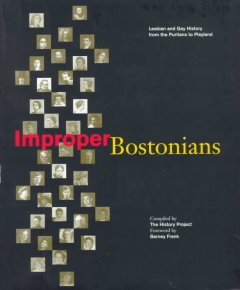 Improper Bostonians : lesbian and gay history from the Puritans to Playland
Improper Bostonians : lesbian and gay history from the Puritans to Playland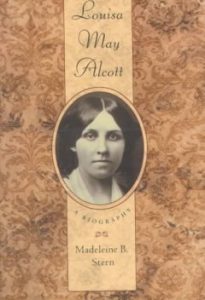 Louisa May Alcott: A Biography
Louisa May Alcott: A Biography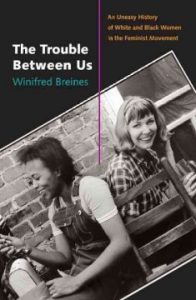

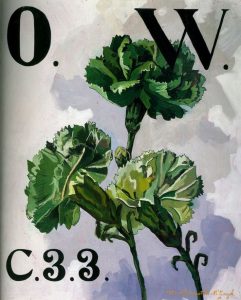 The story is a good one, and definitely fits with Oscar’s love of gently mocking society at large for being ridiculous, but the truth was that there was a lot of meaning behind the green carnation. Green was the symbol of Irish nationalism, and Oscar, an Irishman himself and a firm believer in the cause of Irish nationalism. It was also the color of absinthe, a hallucinogenic drink that of which Oscar was particularly fond (you can still get it now, but it’s not a hallucinogen anymore…). Finally, to Oscar, green was the color of artists–a green carnation is not natural. You can’t grow them naturally. They have to be created, with intention, and purpose.
The story is a good one, and definitely fits with Oscar’s love of gently mocking society at large for being ridiculous, but the truth was that there was a lot of meaning behind the green carnation. Green was the symbol of Irish nationalism, and Oscar, an Irishman himself and a firm believer in the cause of Irish nationalism. It was also the color of absinthe, a hallucinogenic drink that of which Oscar was particularly fond (you can still get it now, but it’s not a hallucinogen anymore…). Finally, to Oscar, green was the color of artists–a green carnation is not natural. You can’t grow them naturally. They have to be created, with intention, and purpose.
 It’s important because human beings are herd animals. We accept things are “right” when other people do them/think them/say them/wear them/eat them/sing them/dance with them/etc. first. It’s why it’s so easy to do what everyone else is doing. It’s why humans who do things alone, who are the first to say something or do something is such a momentous event. Affirmation and validation and self-confidence are all wrapped up together in our cave-people brains. And it’s really hard when you are a reader, to never read a book about people like you. Whether the “people like you” have a certain skin color, speak a particularly language, practice a certain set of beliefs, looks a certain way, or loves a certain way, it’s enormously important to our self-understanding to know that there are other people “like us” somewhere in the world.
It’s important because human beings are herd animals. We accept things are “right” when other people do them/think them/say them/wear them/eat them/sing them/dance with them/etc. first. It’s why it’s so easy to do what everyone else is doing. It’s why humans who do things alone, who are the first to say something or do something is such a momentous event. Affirmation and validation and self-confidence are all wrapped up together in our cave-people brains. And it’s really hard when you are a reader, to never read a book about people like you. Whether the “people like you” have a certain skin color, speak a particularly language, practice a certain set of beliefs, looks a certain way, or loves a certain way, it’s enormously important to our self-understanding to know that there are other people “like us” somewhere in the world.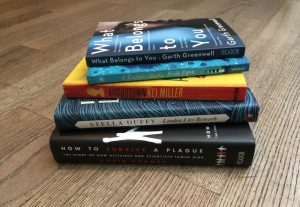
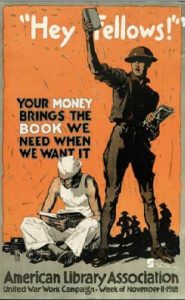
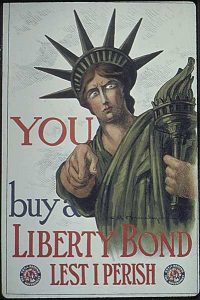 The Russian Revolution, which began in March, had forced the Tzar Nicholas II to abdicate, and put a form of representative government in charge of the Russian Empire. For Wilson, who had often publicly denounced monarchical rule in general, and the 300-year-old Romanov Dynasty in particular, having a representative government in place made it easier for the US to make overtures to Russia–also, his very very strong desire to ensure that the country didn’t fall into the hands of Socialists or Communists made him very eager to make as many overtures, offers of help, and assistance as possible. Furthermore, the increasingly hostile practices of the German Navy, particularly its submarines, had, for some times, turned American favor against the German Army. For the record, the sinking of the Lusitania was not the reason the US got involved in the war. The Lusitania sank in 1915. And people weren’t happy about it, but they weren’t willing to risk their children’s lives because of it. Not by a long shot.
The Russian Revolution, which began in March, had forced the Tzar Nicholas II to abdicate, and put a form of representative government in charge of the Russian Empire. For Wilson, who had often publicly denounced monarchical rule in general, and the 300-year-old Romanov Dynasty in particular, having a representative government in place made it easier for the US to make overtures to Russia–also, his very very strong desire to ensure that the country didn’t fall into the hands of Socialists or Communists made him very eager to make as many overtures, offers of help, and assistance as possible. Furthermore, the increasingly hostile practices of the German Navy, particularly its submarines, had, for some times, turned American favor against the German Army. For the record, the sinking of the Lusitania was not the reason the US got involved in the war. The Lusitania sank in 1915. And people weren’t happy about it, but they weren’t willing to risk their children’s lives because of it. Not by a long shot.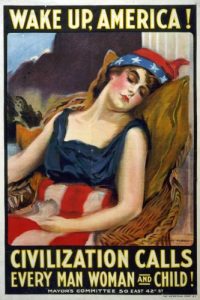 Though, as I noted, Germany would almost certainly have had to admit defeat regardless of the US intervention, the influx of some 1 million US soldiers and all their weaponry and, perhaps most importantly, all their food, certainly tipped the scales in the Allies favor. The US Army was only involved in a few battles in 1918, since it took some considerable time to organize and train 1 million men….Americans, however, had been involved in the war via the French Legion, the Red Cross, the British Army, which permitted foreign pilots to enlist, and other organizations, from the war’s outset.
Though, as I noted, Germany would almost certainly have had to admit defeat regardless of the US intervention, the influx of some 1 million US soldiers and all their weaponry and, perhaps most importantly, all their food, certainly tipped the scales in the Allies favor. The US Army was only involved in a few battles in 1918, since it took some considerable time to organize and train 1 million men….Americans, however, had been involved in the war via the French Legion, the Red Cross, the British Army, which permitted foreign pilots to enlist, and other organizations, from the war’s outset.